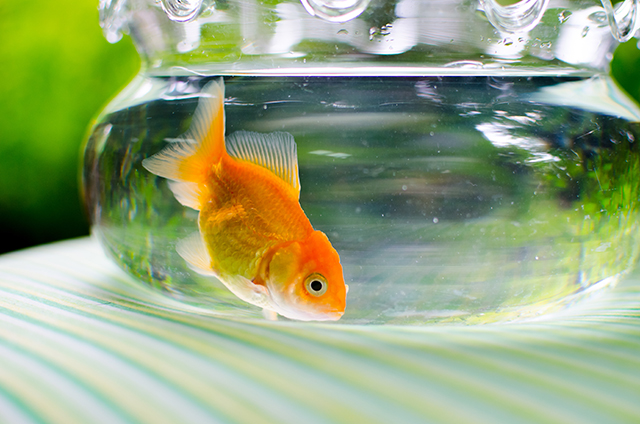Speech therapist teaches her dog how to “talk” – and provides tips for how other dog owners can do the same
05/16/2021 / By Arsenio Toledo

Christina Hunger, a speech-language pathologist, was one of the first people in the world to successfully teach her dog how to “talk.”
Hunger usually works as a therapist for children with speech problems. She coaches them to move past their difficulties or she uses tools to help them communicate with their parents better. While Hunger was working on a toddler’s language assessment, she noticed that a young child on the verge of speaking exhibited many similar behaviors with Stella, her then eight-week-old Catahoula and Blue Heeler mix.
She noticed that, just like a young child, Stella would cry to get attention and would gesture to request an action. For example, whenever Stella was thirsty, she would nose at her empty water bowl.
“It was really this strong lightbulb,” said Hunger during an interview with the New York Post. “Once I saw that, I couldn’t unsee it. I couldn’t think about anything else. It was so obvious to me that dogs just needed a different way to communicate.”
“Dogs can understand words,” she said during a different interview with celebrity news magazine People. “They just need a different way to say words.”
Using some of the techniques she uses to work with toddlers, Hunger created a customized soundboard for Stella with cheap buttons that allow the user to record a sound that will be played back when they are pressed. The words or short phrases that Hunger recorded using her own voice allowed Stella to convey her feelings.
Hunger started with simple words like “outside,” “water” and “play.” It took a month of training and constant work. After a few weeks, Stella learned to approach the button for “outside” when she needed to go for a walk. But she still needed more training, since she still waited for Hunger to push it.
After more training, Stella finally said her first word.
She walked over to the door and sat down by her button, waiting patiently for Hunger’s husband, Jake, to take her for a walk. When he did not come to open the door for her after a minute, she pawed at the button until she finally pressed it.
Jake gave Stella praise and affection for learning how to press the button and immediately took her outside. When they returned, Stella hit the button again and they went right back out. (Related: Your dog needs some face time with the pack: Study on canine health reveals playtime helps reduce long-term stress levels.)
Within the next few days, Stella learned to press the buttons for “water” and “play,” and her knowledge of words grew from there.
Now, Stella is over two years old and can “speak” at least 49 words, including conceptual words like “good” and phrases like “love you,” which she uses to express her affection for Hunger and Jake.
Hunger believes almost every loving dog owner can teach his or her dog how to “speak.” Here are her tips for how dog owners can help their dogs convey their feelings.
Talk to the dog
Hunger believes dog owners should talk to their dogs regularly. The dog needs to hear and understand its owner’s voice and the words coming out of its owner’s mouth.
Along with this, owners must narrate their dog’s activities using short and simple phrases. This means saying “walk” or “come outside” every time the dog is about to leave the house, or saying “food” or “water” when the owner is about to fill up the dog’s food and water bowls.
Use the buttons
The next step is the part that uses the buttons. The owner should program several recordable buttons with simple words, preferably the words the dog already hears and ones that are highly motivating. These words include “play,” “walk” and “scratch.”
Owners can set them up near their respective locations – the “outside” button by the door, the “play” button by the dog’s toys – or put them together in a custom soundboard.
Wherever the owner decides to put the buttons, they should stay there. The location of each button will help the dog better remember the words associated with them.
Use your dog’s buttons frequently
Repetition is very important. Whenever the owner does the action, he or she must press the button. This teaches the dog when it can say these words as well as helps it establish the appropriate context for when the button should be used.
Observe your dog’s actions
Owners must pay attention to how their dogs already communicate with them with their gestures and vocalizations. The dog might stand by the door if it wants to go outside. It may sniff its box filled with toys if it wants to play.
Hunger says these are perfect opportunities for the dog to learn the connection between the button and its desired action. By pairing words with the actions the dog does, Hunger says this models the next level of communication for the dog.
Establish the connection between the buttons and the actions
Once the dog begins showing awareness of what the button does, the owner can begin using cues to draw its attention towards the button. The owner may point to the button, lightly touch it or even just stand near it. These cues act as helpful hints for the dog while it is still learning what to do in order to get its owner to do the desired action.
Be patient
Hunger said it took her a month to teach Stella how to use words like “outside” and “water.” Other dogs might take just as long, if not longer. With anybody learning a language, human or animal, it takes time to hear and remember the words and understand their meanings.
“I absolutely think any regular person with the right information and motivation could teach their dogs to talk,” said Hunger. “Patience is probably the most important part of this. Dogs are essentially learning a second language.”
“Dogs are thinking a lot,” said Hunger. “They feel. They have opinions. They are so observant of their environment. They have comments about what’s happening. They have independent thoughts and ideas and are wanting to share them.”
Learn more about how to take care of dogs and how to develop better relationships with them by reading the latest articles at PetHealth.news.
Sources include:
Tagged Under: animal intelligence, breakthrough, Christina Hunger, discoveries, dog intelligence, dogs, pet behavior, pet communication, Pets, speech, speech therapy, weird science
RECENT NEWS & ARTICLES
COPYRIGHT © 2017 WEIRDSCIENCENEWS.COM
All content posted on this site is protected under Free Speech. WeirdScienceNews.com is not responsible for content written by contributing authors. The information on this site is provided for educational and entertainment purposes only. It is not intended as a substitute for professional advice of any kind. WeirdScienceNews.com assumes no responsibility for the use or misuse of this material. All trademarks, registered trademarks and service marks mentioned on this site are the property of their respective owners.





















